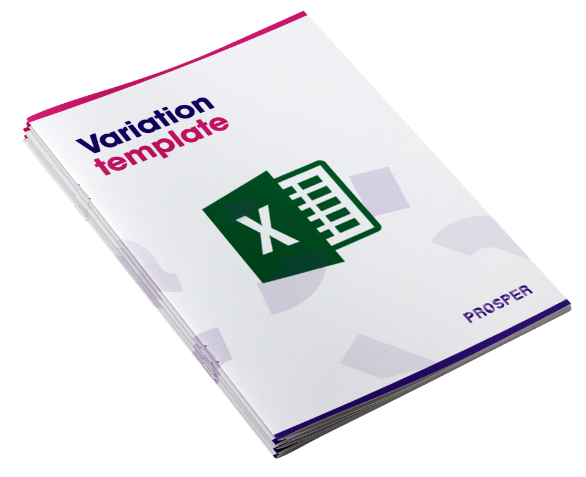EP 11 - How to manage change effectively
Change management, commonly known as variations is a process that often causes friction on construction project, and the whole process can be regressive due to instilled cultures that we’re being ripped off.
In this video I talk about how you can manage change more effectively and get your variation account agreed more quickly
Transcription
This is not new news; variations are one of the biggest causes of friction on a project. This is because variations aren’t managed in an efficient way, and discussions can become regressive when it comes to agreeing variations, as the person paying will be fighting hard to remain on budget.
Let’s take a look at how to improve the way you manage change and variations so you get your money agreed and paid more quickly.
Change management can be a challenging process, particularly on works where there’s significant design changes or on lengthy contracts where scope and design naturally develop.
Here are my four tips to improve the way you manage change and variations on a project:
Tip number 1 – The benchmark
Where aesthetics and finishes are important, you will often find the project or QA manager looking to set a “benchmark”, which is a standard that will need to be met throughout the project.
Benchmarking can be applied to commercial processes and how you present information to them. In the first few variations, provide them with your professional and detailed variation assessment with sufficient breakdowns and backup.
What you’re looking to achieve with the benchmark is to:
- Agree a method of valuing and measuring the changes
- Agree a schedule of rates
- Agree the method of how the variations are instructed
Tip number 2 – Communication
Site and project managers have the tendency to give you a verbal instruction to help push along the project and get something done quickly; you then may find yourself 4 weeks down the line and the QS valuing your application “has no idea” about the impending cost.
To avoid this, simply pick up the phone to discuss the change with the person managing your payments/valuations, then follow it up with in an email confirming what the change is and request that a formal instruction is issued before you proceed.
Tip number 3 – substantiation
You will all have heard it “where’s your substantiation?”. You may feel the client is being unfair, but you do need to show your rationale as to how you get to your variation cost – here’s what you should include:
- The date and who instructed the change, including the instruction reference
- The information the change is being compared against
- Marked-up drawings highlighting the change
- A breakdown detailing the additions and omissions
- Any additional information that’s relevant, such as a quote
Tip number 4 – your process
Having a proactive change management procedure in place will go a long way to reassuring the client you’re managing change in the most efficient way for everyone. Here are three processes you’ll want to get in place:
- Provide a price for the variation and agree the cost upfront before the works are carried out
- Request construction issue drawings two weeks before you start on site - use this time to pick up any changes before you commence
- Send variation costs on a weekly basis so the client is regularly kept in the loop and has more time to assess your claims
And just for you guys, I’ve created a variation template for you to use on your next project – you can download it in the description below.
The Takeaway:
The objective of change management is for a smooth final account agreement - so by having a controlled and professional approach to change, you will boost your cash flow, enhance your profitability, and retain your client relationships
Related resource

Variation management
Our free template shows you how to structure your variations professionally so your client can digest the change and allow you to get to an agreement and paid more quickly.